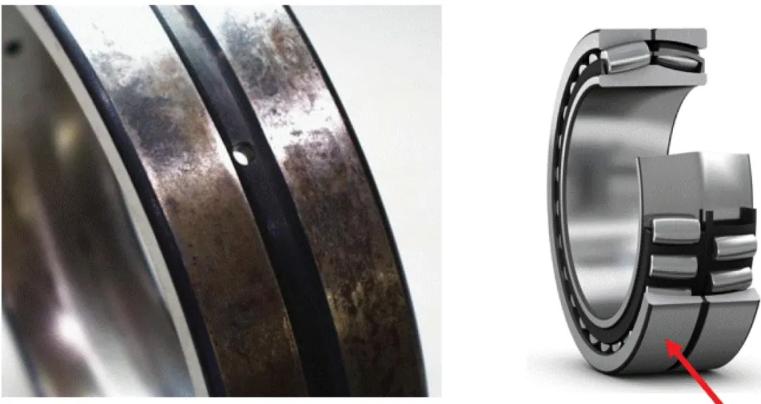ISO 15243 Bearing Failure Modes During Operation - Part 2
ISO 15243:2017 classifies the failure modes of bearings installed in equipment during operation, excluding manufacturing defects such as partial imperfections. The standard categorizes failure modes into six major classes: rolling contact fatigue, wear, corrosion, electrical pitting, plastic deformation, and cracking & fracture.

Descriptions of the six failure modes are as follows:
Corrosion (ISO 5.3)
Rust Corrosion (ISO 5.3.2) is a common issue caused by moisture ingress into bearings. High-hardness bearing materials exhibit low corrosion resistance; when the bearing is stationary, moisture can induce rust formation at positions corresponding to the rolling element spacing. Surface oxidation subsequently leads to subsurface-origin fatigue during operation. Moisture significantly impairs the lubricant's ability to form an oil film of sufficient thickness in operating bearings.
Fretting Corrosion (ISO 5.3.3.2) occurs when micro-movement arises at the interface between mating surfaces—such as between the bearing inner ring and shaft, or between the outer ring and housing. This may result from improper fits between the bearing and shaft/housing, and also depends on the applied load. For example:
Bearings with a rotating inner ring and constant load require a minimum interference fit between the inner ring and shaft to prevent fretting corrosion.
Similarly, bearings with a rotating inner ring and rotating load on the inner ring demand an interference fit between the outer ring and housing to avoid fretting corrosion.
Fretting corrosion is characterized by black-red oxidation at the interface.
False Brinelling (ISO 5.3.3.3) occurs in the contact areas between rolling elements and raceways subjected to slight oscillating motion or vibration. Depressions form at the rolling element spacing positions, causing detachment of the original polished surface and generating black-red oxidation similar to fretting corrosion. Wear severity depends on the magnitude of external loads, intensity of oscillation/vibration, and lubrication conditions.
Electrical Pitting (ISO 5.4)
Overvoltage Pitting (ISO 5.4.2) occurs when an electric current passes through the rolling elements from one bearing ring to the other. On the contact surfaces, this process resembles arc welding (high current density over small contact areas). The material is heated to a temperature range from tempering to melting, resulting in discolored regions of varying sizes where the material is tempered, rehardened, or melted. Due to bearing rotation, annular craters form at locations where molten material is stripped away, and protruding material is abraded. Overvoltage pitting may be caused by electric sparks generated during equipment welding repairs when the welding equipment is improperly grounded.
Leakage Current Pitting (ISO 5.4.3) occurs when low-intensity electric current flows through the bearing. Damage typically appears as closely spaced annular shallow pits, with gray "washboard" patterns forming over time. Rolling elements may exhibit a gray, dull appearance, and the lubricant may discolor. Damage severity depends on current intensity, duration, bearing load, rotational speed, and lubricant properties. Leakage current pitting is common in motors with stray currents when the shaft is improperly grounded or the motor is controlled by a Variable Frequency Drive (VFD).

